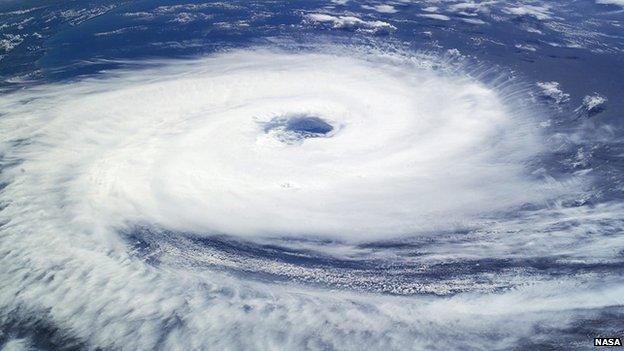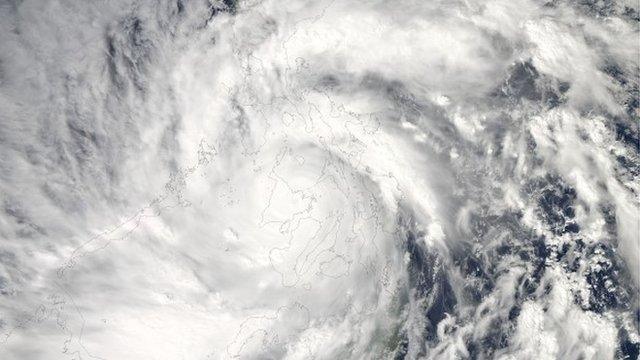Tropical storms migrate toward poles
- Published

Storms are reaching their maximum intensity further north and south every decade
Tropical storms have been migrating northwards and southwards towards the poles for the past 30 years, a paper in Nature says.
People are becoming less likely to face the worst of a hurricane or typhoon if they live close to the Equator, and more likely if they live on the edges of the tropics.
The storms are reaching their maximum intensity 52-63km further north and south every decade.
The paper, led by the US agency Noaa, underlines a previous finding, external that the area defined as the Tropics is clearly expanding.
The researchers believe humans are influencing the changes - with climate change, ozone depletion and aerosols playing a part. They cannot yet be certain which factor is most significant.
The lead author, James Kossin from the National Oceanic and Atmospheric Administration's (Noaa) National Climatic Data Center, says the research is based on observations of the point of maximum intensity of the storm.
He told BBC News: "By the time a serious storm reaches maximum intensity, someone has picked it up and is monitoring it, so we can be pretty confident of this data.
"What we can't be sure of yet is exactly what's causing the trend. There is compelling evidence that the expansion of the tropics is attributable to a combination of human activities, but we don't know which is the primary factor.
"If ozone depletion is mainly to blame, then the situation is likely to stabilise by the middle of the century after ozone-depleting chemicals are phased out. But if climate change is the main factor then there's no end in sight to this phenomenon."
Atmospheric heating
Hurricanes are formed when warm air above warm seas rises upwards to create low pressure, which in turn sucks in more air at the sea surface. The Earth's spin twists the column of air and intensifies the process.
Dr Kossin says the central Tropics are now less "hospitable" to storms, as the ideal conditions for storm creation are shifting slightly north and south. His paper shows that the degree of wind shear in an area an important factor in storm formation, as well as sea surface temperature.
The Tropics dominate world weather by producing a strong updraught of warm moist air which cascades out towards the poles. The area generating the updraught has been expanding since 1979 by 0.5 degrees- 1 degrees latitude per decade.
Warming in the deep tropics causes stronger updraughts that spread further pole-ward, and greenhouse gases are thought to be contributing to this process. The atmosphere is also being heated by tiny particles known as aerosols; some produced by dirty diesel engines and cooking stoves, others by ozone in the troposphere.
Another factor is ozone in the stratosphere. This causes stratospheric cooling, which in turn affects air currents from the tropics.
Noaa says the migration of tropical storms is a global phenomenon with regional variations. In the Southern Hemisphere the Pacific and Indian oceans show a strong pole-ward trend.
The largest shift in the Northern Hemisphere is in the western Pacific. The Atlantic and eastern North Pacific exhibit small movement.
Dr Kossin says the team has tested for the influence of the natural climate system ENSO, but it is unlikely to have played a big part.
Julian Heming, an expert in cyclones at the Met Office, told BBC News that the research did not mean that people very near the Equator would escape severe storms entirely. Typhoon Bopha in 2012 and Typhoon Haiyan both hit land in the Philippines at or below 10 degrees from the Equator.
He said: "It is worth remembering that this paper is not showing any increasing trend in tropical cyclone intensity - just the location of peak intensity."
Follow Roger on Twitter, external.
- Published8 November 2013
